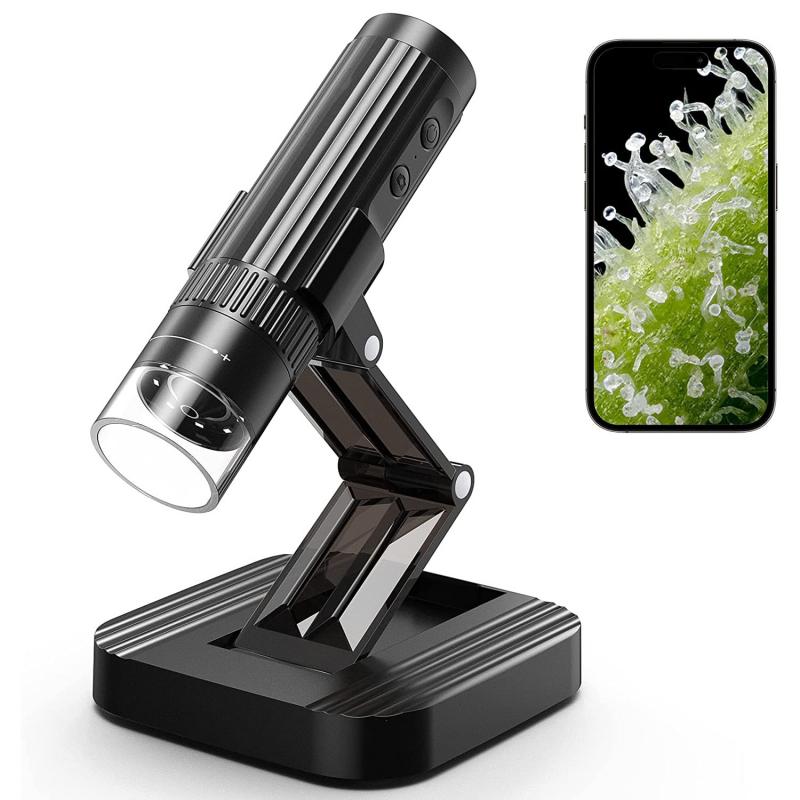Why Was The Microscope Invented ?
The microscope was invented to magnify and observe objects that are too small to be seen with the naked eye. It was developed to advance scientific knowledge and understanding of the microscopic world.
1、 Advancements in scientific inquiry and understanding of the natural world.
The microscope was invented primarily to advance scientific inquiry and enhance our understanding of the natural world. Throughout history, humans have been curious about the intricacies of the world around them, and the invention of the microscope was a significant milestone in satisfying this curiosity.
The microscope allowed scientists to observe and study objects and organisms at a level of detail that was previously unimaginable. By magnifying the image of tiny objects, the microscope revealed a whole new world of complexity and beauty. It enabled scientists to explore the structure of cells, microorganisms, and even smaller particles like atoms and molecules. This newfound ability to observe and analyze the microscopic world revolutionized various scientific fields, including biology, medicine, chemistry, and materials science.
Advancements in scientific inquiry have been greatly facilitated by the microscope. It has allowed scientists to make groundbreaking discoveries, such as the existence of microorganisms, the structure of DNA, and the intricate workings of cells. These discoveries have led to significant advancements in medicine, as scientists have been able to understand the causes of diseases and develop effective treatments.
Moreover, the microscope has played a crucial role in the development of scientific theories and models. By observing and analyzing microscopic structures, scientists have been able to formulate theories about the fundamental building blocks of matter and the mechanisms underlying biological processes.
In recent years, the microscope has continued to evolve and improve. Technological advancements have led to the development of more powerful microscopes, such as electron microscopes and scanning probe microscopes, which can provide even higher resolution and more detailed images. These advancements have opened up new avenues of research and allowed scientists to delve even deeper into the mysteries of the microscopic world.
In conclusion, the microscope was invented to advance scientific inquiry and enhance our understanding of the natural world. Its invention has revolutionized various scientific fields and has led to groundbreaking discoveries and advancements in medicine. With ongoing technological advancements, the microscope continues to be an indispensable tool in scientific research and exploration.

2、 Need for improved tools to study and observe microscopic organisms.
The microscope was invented due to the need for improved tools to study and observe microscopic organisms. Before the invention of the microscope, scientists and researchers were limited in their ability to explore the world of the unseen. They were unable to observe the intricate details of tiny organisms and structures, hindering their understanding of the natural world.
The invention of the microscope revolutionized scientific research by allowing scientists to magnify and examine objects that were previously invisible to the naked eye. It opened up a whole new realm of exploration, enabling scientists to study the intricate details of cells, microorganisms, and other microscopic structures. This breakthrough in technology paved the way for significant advancements in various scientific fields, including biology, medicine, and microbiology.
The microscope has played a crucial role in the discovery and understanding of many fundamental scientific concepts. It has allowed scientists to observe the intricate structures of cells, leading to the development of cell theory and our understanding of the building blocks of life. It has also facilitated the discovery of microorganisms, such as bacteria and viruses, which has been instrumental in the field of microbiology and the development of vaccines and antibiotics.
In recent years, the microscope has continued to evolve and improve. Technological advancements have led to the development of more powerful and sophisticated microscopes, such as electron microscopes and confocal microscopes. These advanced tools have further expanded our ability to observe and analyze microscopic structures with incredible detail and precision.
In conclusion, the microscope was invented out of the need for improved tools to study and observe microscopic organisms. Its invention has revolutionized scientific research and has been instrumental in advancing our understanding of the natural world. With ongoing advancements in microscopy technology, we can expect even more exciting discoveries and breakthroughs in the future.

3、 Desire to explore the intricate details of cells and tissues.
The microscope was invented primarily due to the desire to explore the intricate details of cells and tissues. The development of the microscope revolutionized the field of biology and allowed scientists to delve into the microscopic world, uncovering a wealth of knowledge about the structure and function of living organisms.
The invention of the microscope can be attributed to the curiosity and inquisitiveness of early scientists who sought to understand the world around them. The first compound microscope, which used multiple lenses to magnify objects, was developed in the late 16th century by Dutch scientist Zacharias Janssen. This invention paved the way for further advancements in microscopy, enabling scientists to observe and study cells, microorganisms, and other tiny structures that were previously invisible to the naked eye.
The microscope played a crucial role in the development of the cell theory, which states that all living organisms are composed of cells. Scientists such as Robert Hooke and Anton van Leeuwenhoek made significant contributions to this theory by using microscopes to observe and document the existence of cells. This breakthrough laid the foundation for modern biology and our understanding of the complexity of life.
In recent years, the microscope has continued to evolve and improve. Technological advancements have led to the development of more powerful microscopes, such as electron microscopes and confocal microscopes, which provide even higher resolution and greater detail. These advanced microscopes have allowed scientists to explore the intricate structures within cells and tissues at the molecular level, uncovering new insights into cellular processes and disease mechanisms.
Furthermore, the microscope has found applications beyond biology. It has become an essential tool in various fields, including medicine, materials science, and forensics. Microscopy techniques are used to diagnose diseases, analyze materials at the nanoscale, and aid in criminal investigations.
In conclusion, the microscope was invented out of the desire to explore the intricate details of cells and tissues. Over the centuries, it has played a pivotal role in advancing our understanding of the biological world. With ongoing technological advancements, the microscope continues to be an indispensable tool for scientific discovery and exploration.

4、 Development of new materials and manufacturing techniques.
The microscope was invented for a variety of reasons, but one of the main driving forces behind its development was the need to explore and understand the microscopic world. The desire to observe and study objects that were too small to be seen with the naked eye led to the invention of the microscope.
One of the key reasons for the invention of the microscope was the development of new materials and manufacturing techniques. As scientists and engineers began to discover and create new materials, they needed a tool that could help them examine the structure and properties of these materials at a microscopic level. The microscope provided a way to magnify and visualize these materials, allowing for a deeper understanding of their composition and behavior.
Furthermore, the invention of the microscope also played a crucial role in advancing various scientific fields. It allowed scientists to make groundbreaking discoveries in biology, medicine, chemistry, and physics. For example, the microscope enabled biologists to study cells and microorganisms, leading to significant advancements in the understanding of life processes. In medicine, the microscope revolutionized the field of pathology by allowing doctors to examine tissue samples and diagnose diseases more accurately.
In recent years, the microscope has continued to evolve and improve. With advancements in technology, we now have more sophisticated microscopes that can provide higher resolution and more detailed images. These modern microscopes have expanded our understanding of the microscopic world even further, allowing scientists to explore new frontiers in nanotechnology, materials science, and biological research.
In conclusion, the microscope was invented to fulfill the need for exploring and understanding the microscopic world. The development of new materials and manufacturing techniques played a significant role in driving the invention of the microscope. Over time, the microscope has continued to evolve, enabling scientists to make groundbreaking discoveries and pushing the boundaries of scientific knowledge.






























There are no comments for this blog.